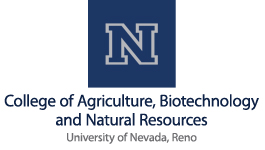Team:Nevada/CD2Inducible
From 2010.igem.org
(→Promoters) |
(→Promoters) |
||
| Line 25: | Line 25: | ||
<p>Heavy metal contamination is an important environmental issue. Heavy metals can contaminate soil and water sources in areas where mining and various industrial proccesses have occurred. These metals can then be absorbed into plants which are subsequently eaten by various animals. Heavy metals are usually not excreted readily and are retained within the body of an animal that has consumed a contaminated food source. Cadmium in particular is not excreted readily from the mammals and is known to cause various etiologies stemming from its build-up in organs (Gobe). <html> | <p>Heavy metal contamination is an important environmental issue. Heavy metals can contaminate soil and water sources in areas where mining and various industrial proccesses have occurred. These metals can then be absorbed into plants which are subsequently eaten by various animals. Heavy metals are usually not excreted readily and are retained within the body of an animal that has consumed a contaminated food source. Cadmium in particular is not excreted readily from the mammals and is known to cause various etiologies stemming from its build-up in organs (Gobe). <html> | ||
<a href="https://static.igem.org/mediawiki/2010/7/79/GFP_tobacco_plant.jpg"><img src="https://static.igem.org/mediawiki/2010/7/79/GFP_tobacco_plant.jpg" class="shadow" style="float:left;width:170px;margin:10px"></a> | <a href="https://static.igem.org/mediawiki/2010/7/79/GFP_tobacco_plant.jpg"><img src="https://static.igem.org/mediawiki/2010/7/79/GFP_tobacco_plant.jpg" class="shadow" style="float:left;width:170px;margin:10px"></a> | ||
| - | </html>In order to develop a mock cadmium-sensing system in plants the promoter for the Cd-transporter gene AtMRP3 (At3g13080) from A. thaliana was transformed into N. tabacum cells. AtMRP3 is utilized by the plant to sequester Cd2+ in the vacuole, which is thought to prevent the cation from interfering with various biological processes (Zientara et al.). Besides being highly induced by cadmium, AtMRP3 has also shown similar induction patterns when plants were subjected to arsenic or lead, thusly making it a useful sensor for various heavy metal soil contaminants. | + | </html> |
| + | |||
| + | In order to develop a mock cadmium-sensing system in plants the promoter for the Cd-transporter gene AtMRP3 (At3g13080) from A. thaliana was transformed into N. tabacum cells. AtMRP3 is utilized by the plant to sequester Cd2+ in the vacuole, which is thought to prevent the cation from interfering with various biological processes (Zientara et al.). Besides being highly induced by cadmium, AtMRP3 has also shown similar induction patterns when plants were subjected to arsenic or lead, thusly making it a useful sensor for various heavy metal soil contaminants. | ||
| + | |||
AtMRP3 will be the first plant-compatible heavy metal promoter available to the iGEM registry. This promoter could be coupled with a myriad of reporters to indicate whether or not plants are experiencing any type of stress due to the presence of cadmium or other heavy metals.</p> | AtMRP3 will be the first plant-compatible heavy metal promoter available to the iGEM registry. This promoter could be coupled with a myriad of reporters to indicate whether or not plants are experiencing any type of stress due to the presence of cadmium or other heavy metals.</p> | ||
Revision as of 18:39, 14 October 2010

Promoters
We would like to thank the following sponsors for their support in helping us make this project possible.
Much thanks to the [http://www.cabnr.unr.edu/Students/Majors.aspx Departments of Biochemistry and Biotechnology] and the [http://www.cabnr.unr.edu/Students/Glance.aspx College of Agriculture, Biotechnology and Natural Resources] for their encouragement and support. Thank you [http://www.unr.edu/inbre/ Nevada INBRE] for over $6,000 in support for supplies and registration costs.
Thank you to Associated Students of the Univeristy of Nevada for supporting our fund raising efforts.
Thank you to [http://www.promega.com/Catalog/CountrySelect.aspx?returnurl=/Default.asp Promega Co.] for free enzyme donations.
Thank you to [http://www.invitrogen.com/site/us/en/home.html?cid=covinvggl89100000002336s& Invitrogen Co.] for a discount on our Vector NTI program.

| 
| 
| 
| 
|
|---|
 "
"
